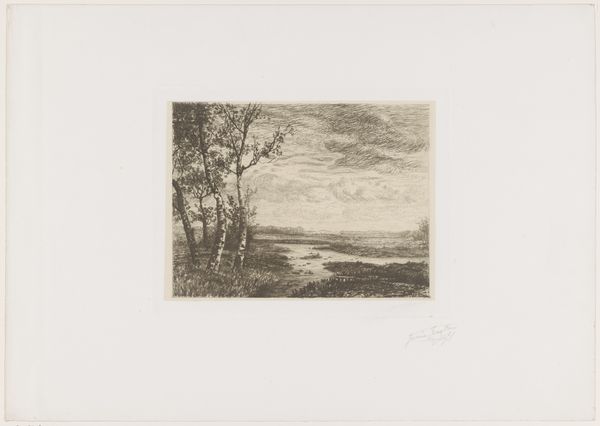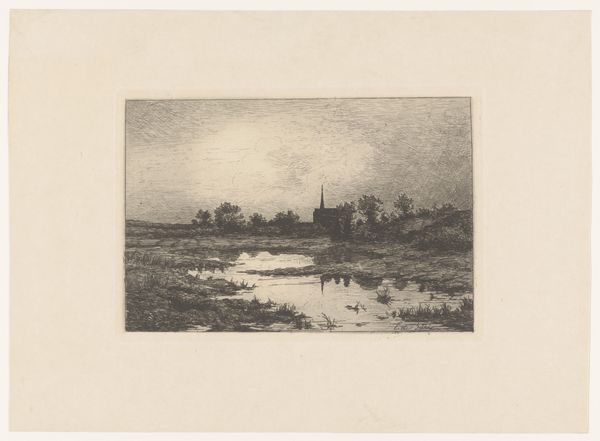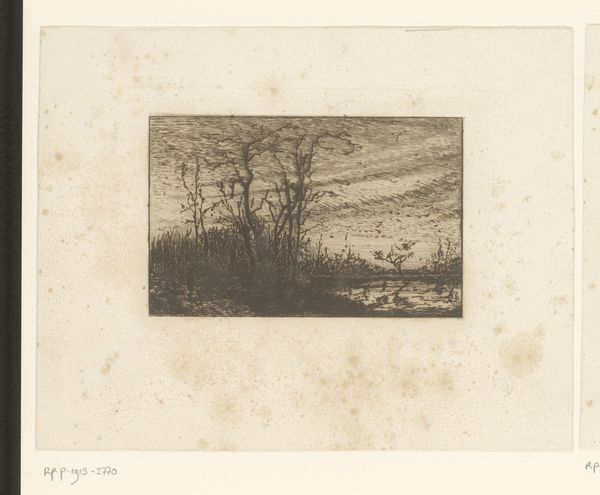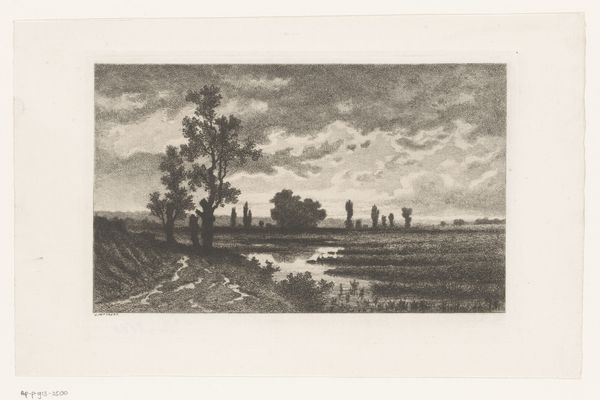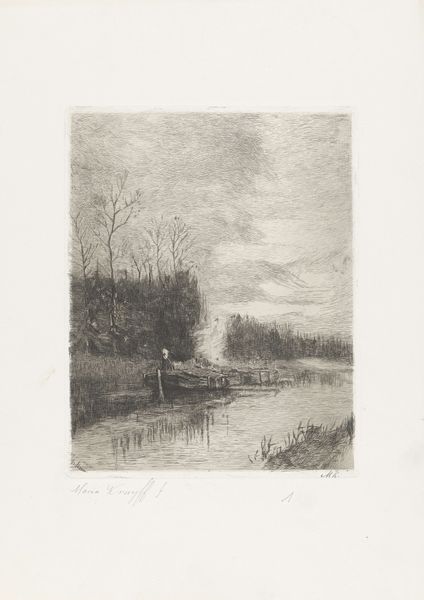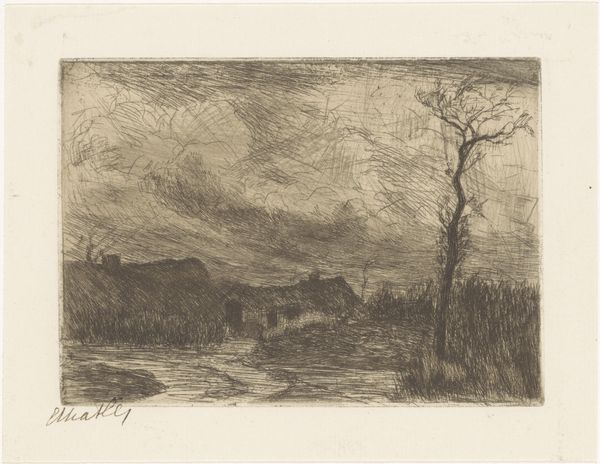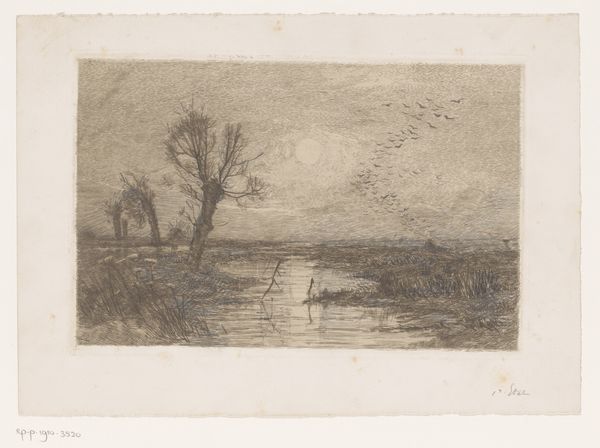
#
pencil drawn
#
photo of handprinted image
#
shape in negative space
#
light pencil work
#
ink paper printed
#
pencil sketch
#
old engraving style
#
ink drawing experimentation
#
pencil work
#
remaining negative space
Dimensions: height 119 mm, width 159 mm
Copyright: Rijks Museum: Open Domain
Editor: This is "Populieren langs de Leie nabij Gent," or "Poplars along the Leie near Ghent," created in 1875 by Emile Puttaert. It looks like an etching or maybe some sort of print. It has a kind of somber, almost brooding feeling to it. What catches your eye when you look at this piece? Curator: The method of production is central here. Consider the labor involved in creating this image through engraving or etching, the artist acting as a sort of artisan or factory. It’s not just the scene depicted, but the conscious manipulation of materials—metal, ink, paper—to arrive at this representation. Note also the relatively reproducible format - an inexpensive print allows for wider consumption by a nascent middle class. Do you think that democratizing aspect affected the choices Puttaert made? Editor: That's a great point! It never occurred to me to think about it that way, like almost mass-producing an "original." Did the limitations of the medium, maybe the types of inks or paper available, influence what he chose to portray? It seems so specific, but maybe that area along the river was a place known for industry or manufacturing. Curator: Precisely. Consider the social and economic factors at play in Ghent at this time. Was this a commissioned work, tied to the emerging industrial landscape? Perhaps those trees themselves, sources for material goods, were as much the subject as the landscape itself. How does seeing it as an artefact of its era impact how you value it now? Editor: That makes me think about how something we might see as simply a pretty landscape could be documenting a specific moment of material consumption and production. So cool! Curator: Indeed. By focusing on the means of production, the work is revealed as both an object of beauty and a historical document.
Comments
No comments
Be the first to comment and join the conversation on the ultimate creative platform.



